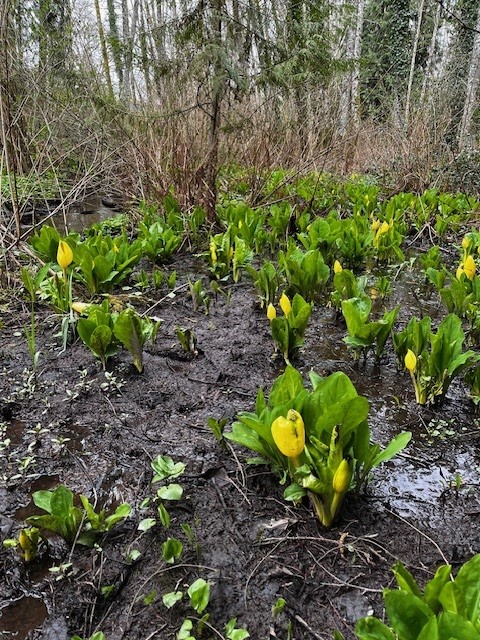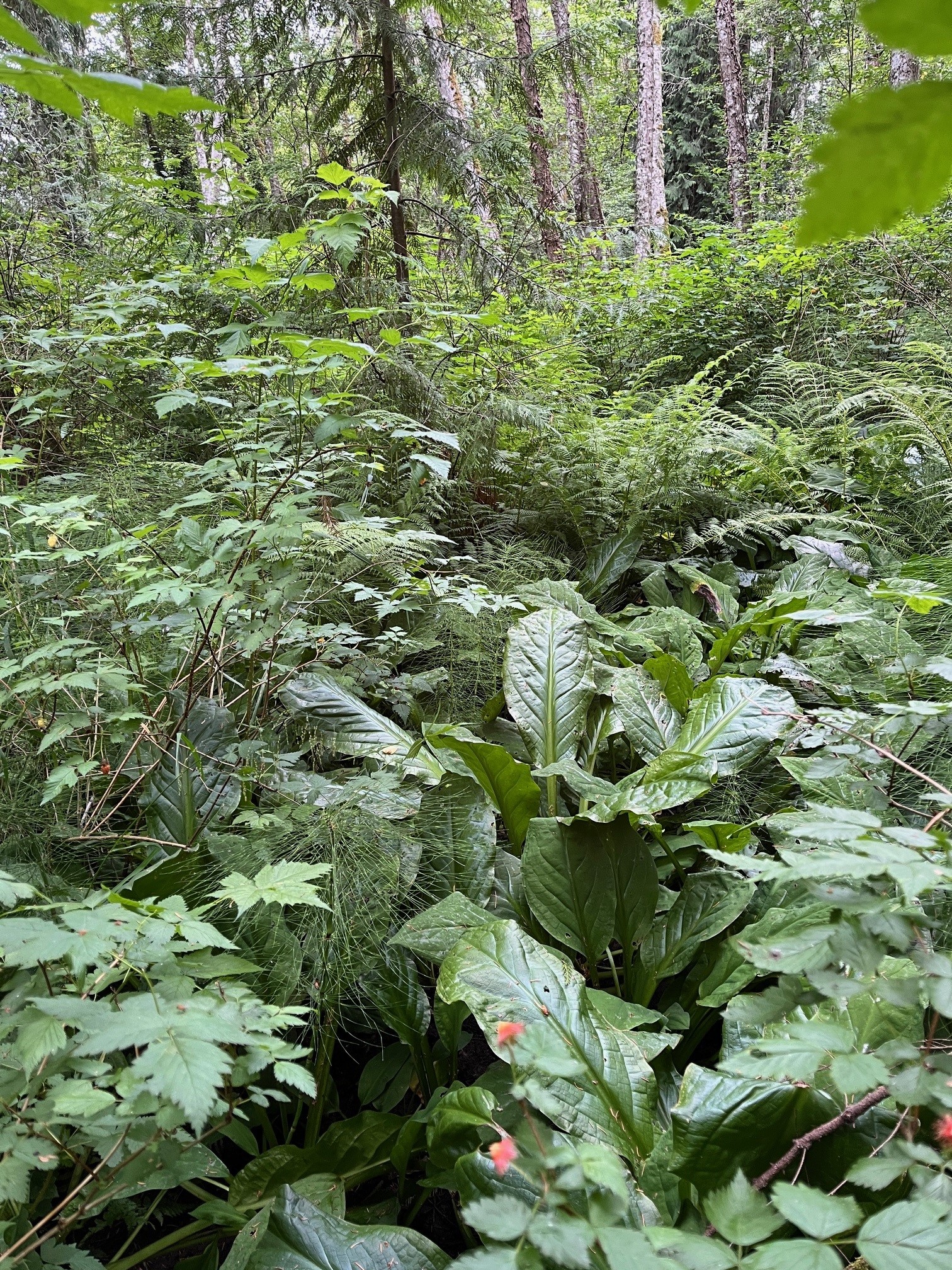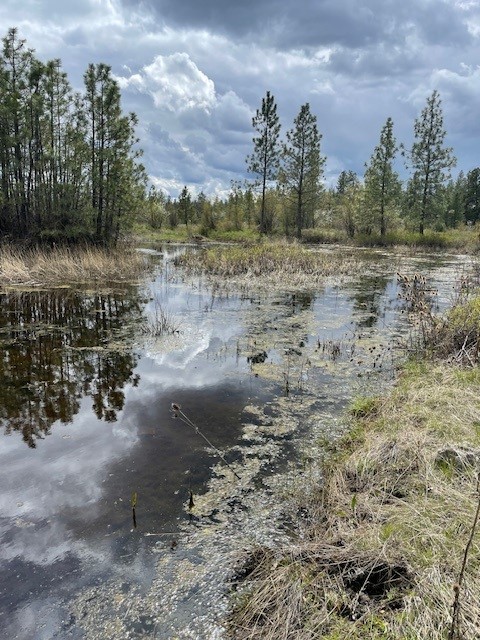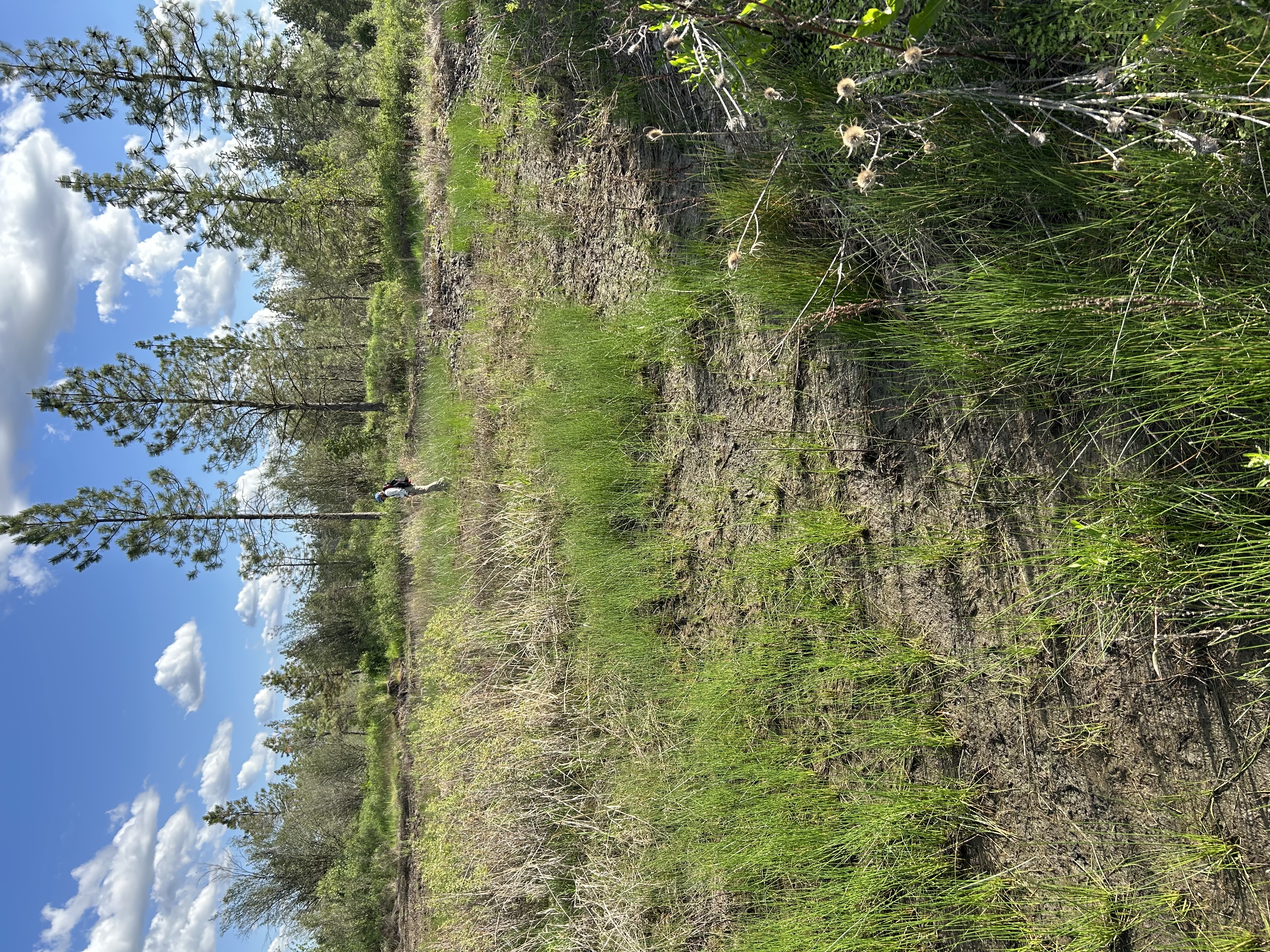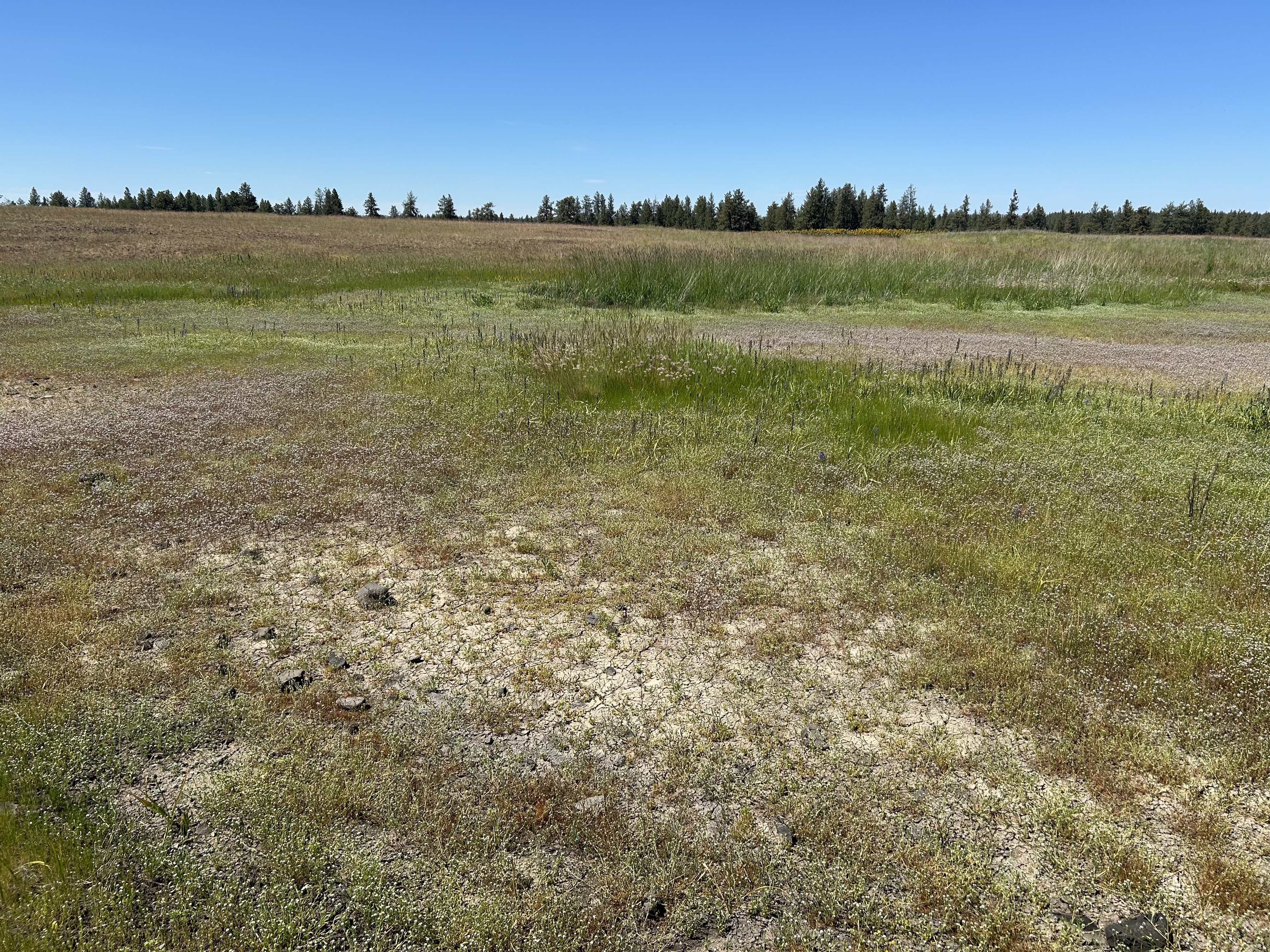
A vernal pool wetland at Turnbull National Wildlife Refuge in late May that is seasonally dry. The lighter, cracked soil has dormant seed shrimp eggs scattered on the surface.
Wetlands are areas where water is at or near the soil surface for at least a couple of weeks during the growing season. In early spring, Washington's wetlands typically have ponded water or saturated conditions which affect the types of plants that can grow there. When conditions are much drier, the influence of water still shapes the functions and values of those wetlands. Although it can be hard to identify wetland areas in late summer when they may appear as dry as the surrounding areas, it doesn’t make them any less important as waters of the state.
Wetlands have important seasonal functions
The seasonal drying cycle is an important process for maintaining water quality. The transition from anoxic conditions—when the wetland is full of water and there is no oxygen in the soil—to oxic conditions when the surface of the soil is exposed to oxygen—results in chemical changes that help reduce pollution.
For example, nitrogen is a common nutrient that degrades water quality. The element is an important crop fertilizer that is also released from other human activities such as combustion from fires and vehicle exhaust. Excess nitrogen not taken up by plants can cause algae blooms. Wetlands help process excess nitrogen and reduce adverse impacts on other waters. The seasonal oxic-anoxic transition in wetland soils is a big part of how they process that nitrogen. An excellent overview of that process is available here.
Towards summer's end, many wetlands appear dry, but are on stand-by, ready to perform valuable functions as the rainy season approaches. Wetlands absorb and store precipitation during the wetter months. This slows the flow of water to Washington's streams and rivers, preventing flooding and erosion. It also helps to recharge underground aquifers and keeps the water flowing in our streams and rivers when the weather is hot and dry again. As water is detained and stored in wetlands, sediment and pollutants are filtered out, which helps to improve and protect water quality.
Forested wetland at Mission Creek Park in early April
Same forested wetland at Mission Creek Park in early July
Seasonally dry wetlands offer safe haven for some species
Pacific treefrog
Adult treefrogs lay eggs in the early spring when wetlands have standing water. Then their tadpoles race the clock to metamorphose into tiny frogs and leave the wetlands before the water is gone.
Vernal pools: a unique type of seasonally dry wetland
One wetland that typically dries completely is a vernal pool. These wetlands hold water early in the growing season and then usually dry out within four months. They host unique plant and animal species adapted to these conditions. Vernal pools are one of the most important habitats for waterfowl migrating through Washington in the spring.
In addition, several species of fairy shrimp and seed shrimp rely on vernal pools for their life cycles. These invertebrates are specially adapted to wetlands that dry out, with a dormant life stage that rests in the dry soil of vernal pools until water becomes available again in the winter. You can find vernal pools throughout the Channeled Scablands and Columbia Plateau, as well as the San Juan Islands.
Whether you're exploring the back country, taking a day hike, or walking in a local park this summer, see if you can recognize the wetlands in our landscape, even if they are dry. They will transform once again when the seasonal rain and snow returns.


